Could Tuvalu’s History Stretch Back 8000 Years?
Tuvalu is a small independent nation in the Pacific. This group of islands is one of the most remote in the world and its population is one of the most isolated. Despite this, the islands have a long history and played an important role in the colonization of the Pacific Ocean. The largest source of income for Tuvalu is its unique web address suffix. It has been able to make money by marketing it to television companies and other entities, and some have been prepared to pay large sums for internet addresses ending in .tv
The Geography of Tuvalu
The island is composed of three reefs and a number of atolls. The total landmass of the islands is only ten square miles (16km). They lie roughly half-way between Australia and the American state of Hawaii. The population is less than 12,000 people and they still largely retain their traditional lifestyle. Because of rising sea waters caused by global warming there are real fears that the nation may disappear. Its capital is Funafuti.
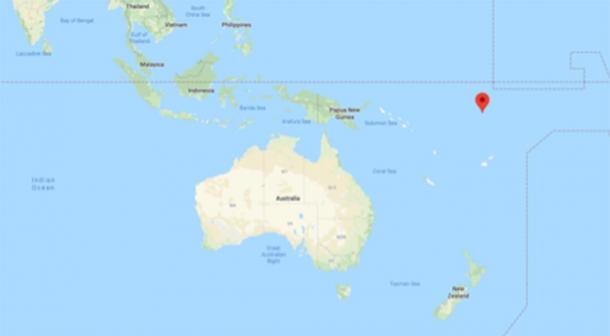
The location of Tuvalu, Pacific Ocean (Google Maps)
The History of Tuvalu
The island was possibly first colonized by members of the Lapita culture from Samoa or Tonga over 2000 years ago. Local foundation myths claim that one island was made by a Tongan deity, and the others by a Samoan supreme being. This may reflect the fact that people from both Tonga and Samoa settled on the island.
It is believed that the atolls and reefs played an important part in the Polynesian colonization of the Pacific. From Tuvalu, Polynesian migrants in canoes travelled to distant islands. Migrants used them as stepping-stones in their journey to Micronesia. Sadly, we know very little about how the societies on the atolls and reefs developed.
Under the leadership of chiefs, known as ‘ Aliki’, traditional Tuvaluan society continued for hundreds of years before it underwent significant changes with the arrival of European traders in the 1820s.
Tuvalu was sighted by the Spanish explorer Álvaro de Mendaña during his first expedition to the Pacific in the late 16 th century. The Spanish, however, did not land. It was only in the 1770s that the island was surveyed by a British explorer. In subsequent years, whalers visited the island and the people of Tuvalu gradually came under western influence. In the 1860s Peruvian mariners visited the islands ostensibly looking for guano. They enslaved many islanders and as a result the population of the island nearly collapsed.
By the 19 th century, the islands were known as the Ellice Islands, named after a British politician and Tuvalu was Christianized by British missionaries from the London Bible Society. Eventually Ellice Islands became a protectorate.
- DNA Study Unravels Mystery Behind Origins of First Pacific Islanders
- Pindai Caves, Once Home to the Lapita People and Extinct Species
- The Perplexing Purpose of the Gigantic Pulemelei ‘Pyramid’ Mound of Samoa
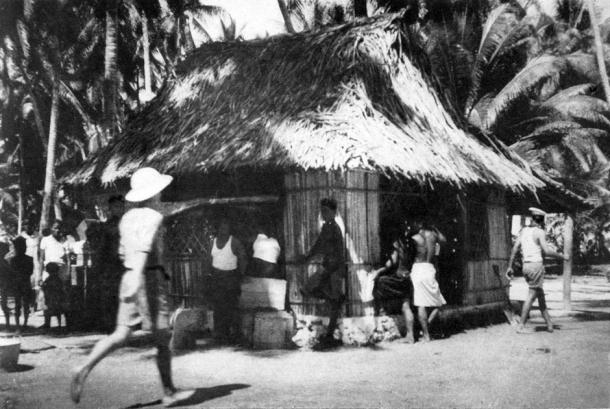
Coast watching headquarters at Nukufetau in 1941, then Ellice Islands (NZHistory)
During WWI Tuvalu became a colony and was opened up to the world in the following decades. During the Pacific War (1942 to 1945), Tuvalu was very much on the frontline. The atoll was occupied by the US Marine Corps and they used it as a forward base as part of their operations against the Japanese, who occupied the neighboring atoll of Kiribati.
A Naval Construction Battalion (Seabees) built a seaplane port on one of the islands. The islands of Tuvalu were critical to the Allied victories and played a central role in the battles of Tarawa and Makin in November 1943.
After a referendum in 1978, the archipelago gained independence and joined both the Commonwealth and the United Nations. The island became one of the smallest nations in the world and because of its lack of resources and scale, it remained financially impoverished. Many people have emigrated from Tuvalu in recent years.
Landmarks of Tuvalu
There are many beautiful areas in the atolls and reefs, including archaeological sites. One of the most important in this part of the Pacific is the Nanumanga cave, which was discovered in 1986 by scuba divers. The cave is located some 100 feet (31m) below sea level. Evidence was found to indicate that the islands were inhabited before the coming of the Polynesians. Some archaeologists believe that they found proof that Tuvalu was inhabited approximately 8000 years ago.
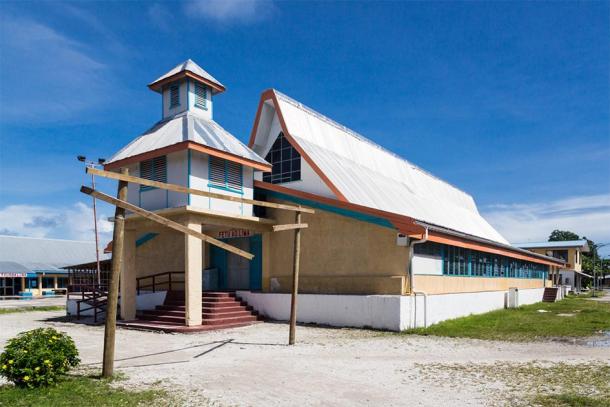
Most prominent building on Funafuti atoll, Fetu Ao Lima or Morning Star Church (Dmitry/ Adobe Stock)
On the south atoll of Nukulaelae, is the site of an abandoned village that dates to before the coming of the Europeans. A large stone called Te Faleatua, where pre-Christian religious rites were practised can be found here.
Travelling to Tuvalu
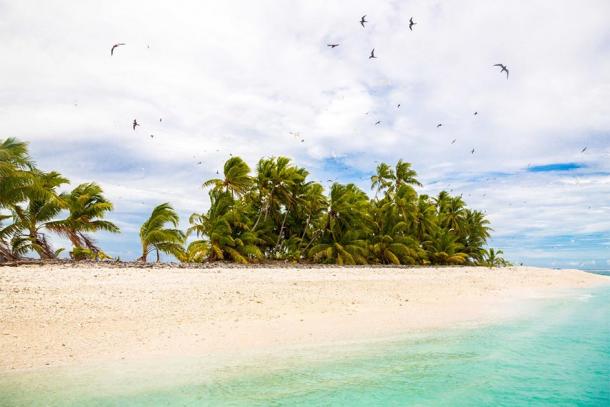
Sandy beach, flock of birds flying. Funafuti atoll, Tuvalu, Polynesia, South Pacific, Oceania. (Dmitry/ Adobe Stock)
As Tuvalu is remote, it can be difficult and expensive to visit, although there are flights from Fiji and Kiribati. The best way to get around the islands is by hiring a scooter which is a popular mode of transport among Tuvaluans.
Top image: Aerial view of Funafuti atoll and the airstrip the airport in Vaiaku Source: Dmitry/ Adobe Stock)
By Ed Whelan
References
Macdonald, B. (2001). Cinderellas of the Empire: Towards a history of Kiribati and Tuvalu
Available at: https://www.jstor.org/stable/20706637?seq=1
McLachlan, S. (1982). Savage island or savage history: an interpretation of early European contact with Niue. Pacific Studies, 6(1), 26
Available at: https://search.proquest.com/openview/08e084df845a515ec14aea3141d5a1a9/1?pq-origsite=gscholar&cbl=1817199
Mortreux, C., & Barnett, J. (2009). Climate change, migration and adaptation in Funafuti, Tuvalu. Global Environmental Change, 19(1), 105-112
Available at: https://www.sciencedirect.com/science/article/abs/pii/S0959378008000903


















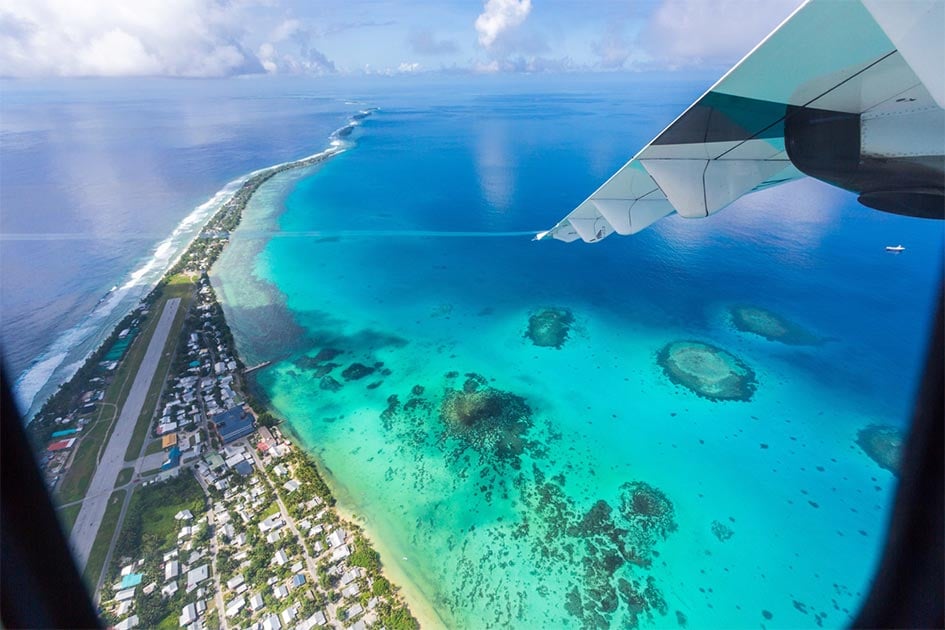

Comments
This article reads more like a holiday piece. Apart from the assertion that some archaeologists think they have proof that the islands history could be as much as 8000 years old, there's nothing. No information. No links. No names of the archaeologists, or the research done. The fact that this article is now almost three years old, and hasn't been updated, makes me feel that there is probably no evidence at all. Either provide the evidence and links, or delete this non story.
Kind regards,
Lee.
Crasslee